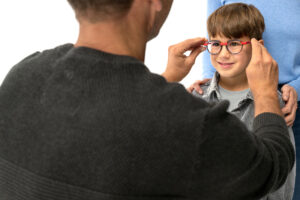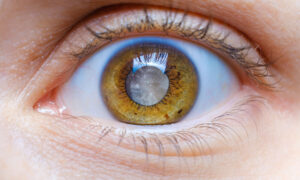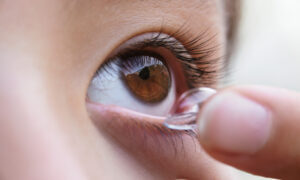May 8, 2024
AALEN, Germany — At the Association for Research in Vision and Ophthalmology (ARVO) Annual Meeting 2024, ZEISS Vision Care presented its data on the efficacy of its MyoCare spectacle lenses.
ZEISS has established a robust body of evidence for the efficacy of the ZEISS MyoCare portfolio in human trials involving large samples, different ethnicities, and multiple research locations. The presentations at ARVO include the 12-month results from a multi-center trial in China and six-month results from a multi-center trial in Spain and Portugal.
The ZEISS MyoCare lenses significantly slowed myopia progression in both Asian and Caucasian children compared to ZEISS single vision lenses. In Asian children, after twelve months of wear, ZEISS MyoCare slowed myopia progression on average by 0.31D and 0.13 mm (relative efficacy of 48% and 41%), and ZEISS MyoCare S lenses slowed myopia progression on average by 0.29D and 0.11 mm (relative efficacy of 45% and 34%, respectively).1 Additionally, both lenses reduced the risk of fast progression (≤ -0.75D or more per year).2 In Caucasian children, compared to ZEISS single vision lenses, use of ZEISS MyoCare lenses for six months resulted in a reduction of myopia progression by an average of 0.15D and 0.07 mm (relative efficacy of 63% and 77%).4
In both groups, vision with ZEISS MyoCare lenses was rated to be either good or very good, and the daily wear time did not differ from regular single vision lenses.4,5
Axial elongation when using ZEISS MyoCare and ZEISS MyoCare S lenses was compared to physiological axial elongation in emmetropic eyes and reported as emmetropic progression ratio (EPR). For Asian children, on average EPRs of 70% for ZEISS MyoCare and 68% for ZEISS MyoCare S were seen after twelve months of wear.6
The published results are derived from two distinct multi-center clinical trials, the first of which is conducted at three locations in China (Tianjin, Shenyang, and Beijing) with 240 Chinese children aged 6 to 13 years, spherical equivalent refractive error (SE) of -0.75D to -5.00D, randomly assigned to ZEISS single vision lenses, ZEISS MyoCare, or ZEISS MyoCare S lenses (80 children per group). Results for the first 12 months of this ongoing trial were reported at ARVO.
The second multi-center trial involves 304 Caucasian children, six to 13 years of age, SE of -0.75D to – 5.00D and past annual progression of at least -0.50D. This study is being conducted with ISEC Lisboa, Portugal, and Complutense University of Madrid, Spain, at six clinics. Children in the trial are randomly assigned to either ZEISS single vision lenses (N = 152) or ZEISS MyoCare lenses (N = 152). Results for the first six months of wear were reported at ARVO.
ZEISS MyoCare lenses incorporate C.A.R.E. technology (Cylindrical Annular Refractive Elements) for the management of progressive myopia. Around the center of the lens with far distance correction, the functional zone incorporates almost invisible concentric circles with alternating defocus and correction zones in a ring-like pattern expanding toward the periphery of the lens. The myopic defocus, which is achieved in this way, has been shown to effectively delay the growth of the eye’s length beyond that which is physiologically normal, thus slowing down the progression of myopia. ZEISS MyoCare S lenses have a slightly larger central clear zone and less mean additional surface power of the annular elements.
References
C.A.R.E and MyoCare are registered trademarks of Carl Zeiss Vision GmbH.
Not all products, services, or offers are approved or offered in every market, and approved labelling and instructions may vary from one country to another. For country-specific product information, see the appropriate ZEISS Vision Care country website. // ZEISS MyoCare and ZEISS MyoCare S are not available in the United States.
1 The relative efficacy describes the reduction of progression compared to the control group wearing ZEISS single vision lenses. / Chen, X., et al. (2024, May 5-9). Slowing myopia progression with cylindrical annular refractive elements (CARE) – 12-month interim results from a 2-year prospective multi-center trial. [Conference presentation abstract]. The Association for Research in Vision and Opthalmology (ARVO) Annual Meeting, Seattle, WA, United States.
2 Sankaridurg, P., et al. (2024, May 5-9). Probability of surviving fast progression and eye growth reversal after 1-year of spectacle wear with cylindrical annular refractive elements [Conference presentation abstract]. The Association for Research in Vision and Opthalmology (ARVO) Annual Meeting, Seattle, WA, United States.
3 Alvarez-Peregrina, C., et al. (2024, May 5-9). Efficacy of a next-generation design of ophthalmic lenses for myopia control: Six-month results of the CEME Study [Conference presentation abstract]. The Association for Research in Vision and Opthalmology (ARVO) Annual Meeting, Seattle, WA, United States.
4 Alvarez-Peregrina C., et al. (2024, April 12-14). Vision, confort y tiempo de adaptacion a un nuevo diseno de lente oftalmica para el control de miopia [Conference presentation abstract]. OPTOM 2024, Madrid, Spain.
5 Rifai, K., et al. (2024, May 5-9). Subjective acceptance of spectacle lenses with cylindrical annular refractive elements (CARE) in Chinese children with myopia [Conference presentation abstract]. The Association for Research in Vision and Opthalmology (ARVO) Annual Meeting, Seattle, WA, United States.
6 Emmetropic Progression Ratio (EPR) on a scale of 0 – 100%, where 0% equals axial elongation equivalent to a myopic eye and 100% equals axial elongation equivalent to an emmetropic eye. / Ohlendorf, A., et al. (2024, May 5-9). Myopia control efficacy through Emmetropic Progression Ratio:1-year of spectacle wear with cylindrical annular refractive elements (CARE) [Conference presentation abstract]. The Association for Research in Vision and Opthalmology (ARVO) Annual Meeting, Seattle, WA, United States.














